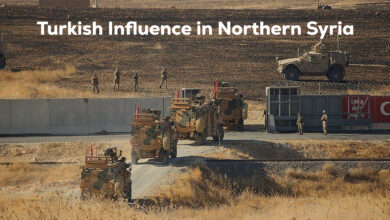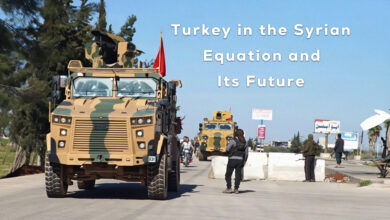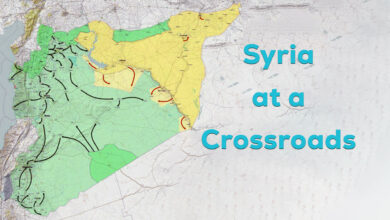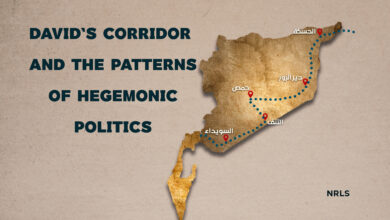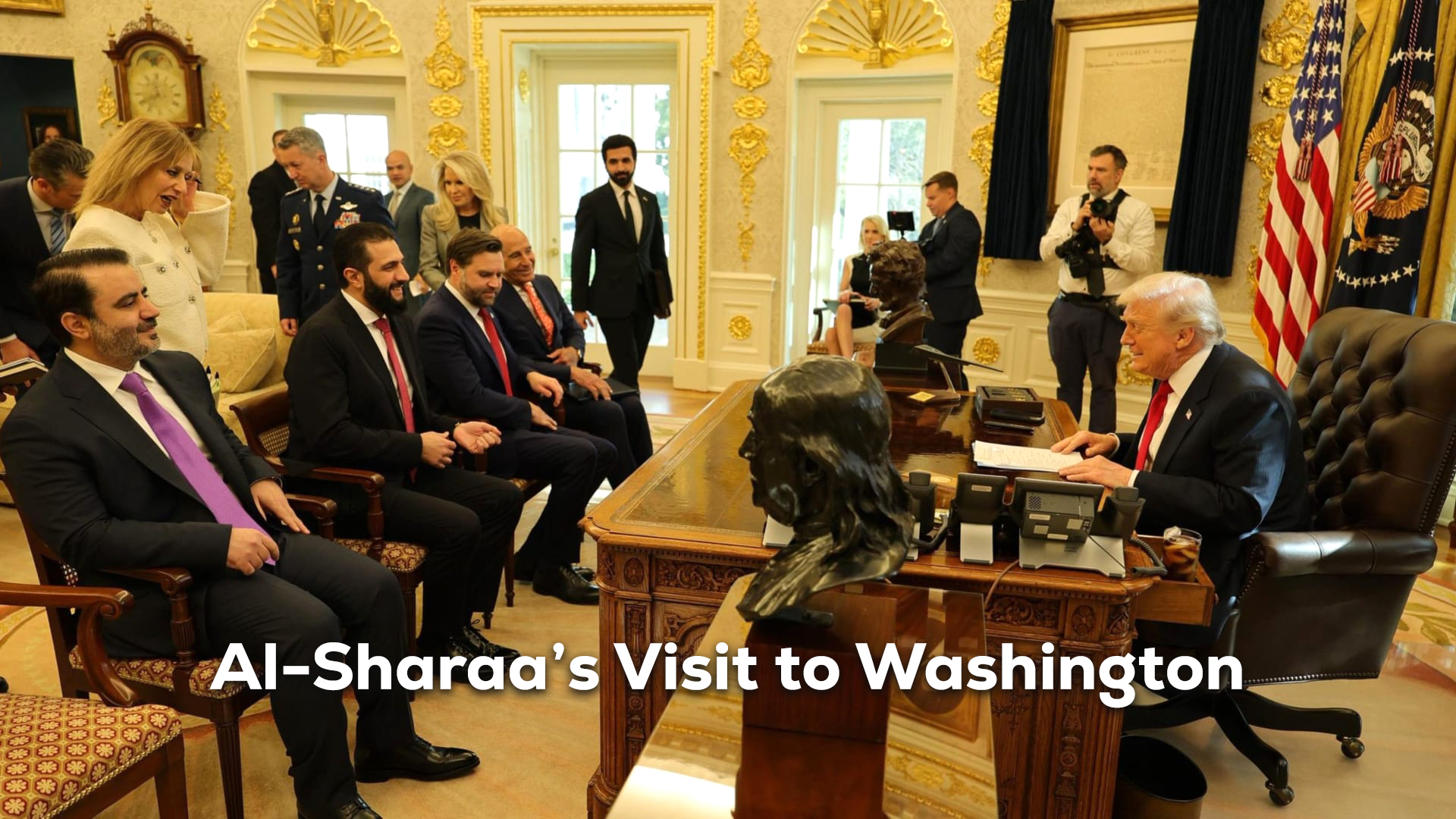
This marks President Ahmed al-Sharaa’s second visit to the United States following his participation in the United Nations General Assembly, and his first trip to Washington to meet with U.S. President Donald Trump, after Trump removed al-Sharaa from the terrorism list during his visit to Saudi Arabia, facilitated by a Saudi-mediated meeting. However, this visit carries numerous political, military, and economic implications, including counterterrorism, minority protection, sanctions relief, Syria’s reconstruction, and the security agreement with Israel. Al-Sharaa is also expected to visit Ankara following his trip to Washington, a routine practice for the new Syrian authority to brief Turkey on the developments in Washington and the steps he must take.
Al-Sharaa is attempting to present himself as a leader open to the West, distancing himself from his previous role as a leader of a Salafi-jihadist current, portraying himself as a reliable figure in Syria, and repositioning the country from a Russian ally to a Western-aligned state. This also includes resolving certain outstanding issues and negotiating agreements that ensure Israel’s security and interests in Syria, particularly in the south, as well as U.S. economic and strategic interests in Syria (counterterrorism, preventing the return of Iranian influence, and other interests linked to Hezbollah, with Western support), and limiting the movement of Russian forces (Khmeimim Airbase and Tartus Naval Base). Al-Sharaa is working to reshape his image to consolidate his role as Syria’s president in the post-transitional phase and seeks to entrench his authority in Syria with Western backing, while ignoring calls from Syrian communities and domestic reconciliation efforts.
Key Files to Be Agreed Upon
Syria has several critical files that must be resolved due to their significant impact on both the internal situation in Syria—such as the reconstruction of the Syrian state according to the Authority’s perspective—and the regional environment. This visit aims to finalize and formally sign off on these issues (following U.S. directives) rather than to discuss them with the U.S. president. Among these files are:
- The Security Agreement File: This file is linked to Syrian-Israeli normalization. After Assad’s fall, negotiations between the new authority and Israel progressed rapidly, and the signing of a security agreement with Israel was anticipated. However, new Israeli demands related to the Sweida issue have prevented reaching a final agreement. Al-Sharaa, in order to consolidate his authority in Damascus, appears in need of signing this agreement. To avoid being seen as the president who ceded the Golan Heights and areas controlled by the Israeli army after Assad’s fall, the 1974 Disengagement Agreement may be amended. This could involve a symbolic presence of the Syrian army alongside Israeli and U.S. forces in strategic points controlled by Israel, such as Mount Hermon observation posts and other locations, while rendering the southern region demilitarized. Israel is unlikely to relinquish these areas, and a symbolic Syrian presence would not alter the balance as long as Israeli forces remain. This agreement is considered a preliminary step toward full normalization with Israel.
- Counterterrorism and Syria’s Integration into the International Coalition Against Terrorism: This file is particularly complex for the new authority in Damascus. The authority has a prior history with groups such as Jabhat al-Nusra, Jabhat Fatah al-Sham, and Hayat Tahrir al-Sham (HTS), which were linked to al-Qaeda, followed by a split from ISIS. Many HTS fighters, especially foreign fighters, adhere to jihadist ideology, reject any agreement with the United States, and maintain regional loyalties. Therefore, Syria’s counterterrorism efforts and joining the international coalition against ISIS could create internal disputes and splits within HTS. Russia holds the file on Chechen fighters, China on Uyghurs and the East Turkistan Islamic Party, Turkey on its mercenaries outside Damascus’ control, and the U.S. on foreign fighters and ISIS members. These actors constitute both the strength of HTS and a weakness for the new authority in consolidating its rule in Syria. However, addressing them is essential for the new authority to gain international legitimacy, lift sanctions, and consolidate its control in Damascus. Syria’s joining the international coalition could be considered a military coup against HTS and anyone undermining al-Sharaa’s authority or international legitimacy.
This file carries many uncertainties, and it is difficult to predict future developments, especially among allied states (the U.S., Israel, and Turkey). To avoid conflicts over interests in Syria, a policy of strategic bargaining may reemerge, serving their agendas in the country. This could include allowing Turkey (the state sponsoring terrorism) to establish military bases in central Syria in exchange for relinquishing its mercenaries and terrorist factions—particularly foreign fighters—or integrating them (under U.S.-Israeli-Turkish-Syrian coordination) into military operations against Lebanon’s Hezbollah, which has so far refused to surrender its weapons to the Lebanese state.
- Protection of Syrian Communities (Minorities): The new Syrian regime committed a grave mistake that affected the internal situation in Syria, carrying out massacres against the Alawite and Druze communities. These atrocities could have been avoided, and efforts could have been made to restore the unity of the Syrian social fabric. However, the ideology held by the regime, its weak control over armed factions (Turkey-backed mercenaries), and the connection of these factions to Turkish agendas—aiming to weaken the Alawite community in Syria due to its influence on Alawites in Turkey—all negatively impacted the regime’s credibility. Additionally, the massacres against the Druze community effectively ended the new Syrian regime’s international credibility regarding the protection of Syrian communities. The international community has increasingly demanded the protection of minority rights and, indirectly, the establishment of a federal system to safeguard these rights.
Consequently, al-Sharaa lacks the leverage to maintain a centralized system after these massacres. Therefore, his acceptance of moving Syria toward a decentralized or even federal system is expected. Accordingly, it is assumed that he will accept U.S. demands related to protecting and preserving the rights of Syrian communities.
- The Economic File: Syria is experiencing a severe economic decline, and the new authority lacks a clear vision to improve the economic situation. This is compounded by the security situation, which negatively affects the economy, as well as the sanctions imposed on Syria. The new regime relies heavily on Gulf Arab aid. However, the economic file and the reconstruction of Syria are linked to the previous files and to U.S. openness toward Syria. Lifting U.S. sanctions on Syria, following Congressional approval, could improve the economic situation and mark the beginning of entry for American and Western companies. This includes the activation of oil pipelines such as Kirkuk–Baniyas, in addition to gas projects and reconstruction initiatives.
- Turkey seeks to leverage this file to expand its economic influence in Syria. However, its economic capacity does not allow it to extend its influence independently, necessitating external funding. This could be achieved through a dedicated support program for Syria under the supervision of the Standing Committee for Economic and Commercial Cooperation of the Organization of Islamic Cooperation (COMCEC).
Implications of this Visit on Syria and Its Regional Environment
This visit represents the acceptance of American directives, including Israeli ones, through which al-Sharaa may consolidate his authority and extend his presidency in Syria beyond the transitional phase. However, what al-Sharaa agrees to in Washington could trigger backlash within Syria and among his regional backers (Turkey), potentially causing disputes between military factions loyal to al-Sharaa, factions aligned with Turkey, and jihadist groups that reject or denounce any agreement with the United States. Since al-Sharaa lacks the military strength to confront these challenges, he may seek Western support and protection for himself and his regime against any potential coup or targeted attacks.
Some potential consequences of this visit on Syria and its regional environment include:
- Security Agreement with Israel: The security agreement would mark the beginning of full normalization with Israel, leading to Syria signing the Abraham Accords. This would effectively remove Syria from the “axis of resistance,” leaving only Lebanon and Iraq within that axis. Syria would follow suit after Iran’s proxies in Lebanon and Iraq are neutralized. The southern region would be demilitarized, allowing Israel freedom of movement in coordination with Damascus and the United States. This arrangement would grant the Druze in Sweida (Jabal al-Bashan) strategic leverage toward achieving full self-administration. With this agreement and guaranteed protection for the Druze, as well as the establishment of a self-administration in Sweida, Syria would enter a new phase in its modern history toward a decentralized system.
- Ending Armed Factions Outside Damascus’s Control: After Syria joins the international coalition to combat ISIS, resolving the issue of armed factions outside Damascus’s authority and jihadist groups will require full coordination with the Syrian Democratic Forces (SDF), the coalition’s only ground force. This implies integrating the SDF into the new Syrian army as a unified military block, potentially making the SDF the nucleus of the new Syrian army in matters of counterterrorism.
- Ending the Role of Turkey-backed Mercenaries: Following the conclusion of their role, a Sunni-Shia conflict could potentially erupt in the region to neutralize Hezbollah in Lebanon first and then Iranian militias in Iraq. Supporting this scenario, Iraqi Defense Minister Thabet al-Abbasi confirmed that the U.S. Secretary of Defense informed him of upcoming military operations in the region and requested guarantees against interference by Iraqi factions, warning of a clear U.S. response if they intervene. Al-Abbasi noted that the Americans confirmed the operations would take place on Syrian territory and that this warning was issued ten days prior. Despite these factions being on U.S. sanctions lists, the United States has not carried out military operations against them, indicating the regime may need these factions in the upcoming phase.
- Turkey’s Loss of Influence over Mercenaries: Even if Turkey succeeds in establishing new military bases for its mercenaries, it may lose its future military influence. Turkish bases will serve Western interests more than Turkey’s own if a new Israel-Iran conflict occurs. Consequently, these bases will eventually become irrelevant as Turkey’s role in the Greater Middle East project ends. Russia, as a major power, has already lost influence and bases in Syria; if the West decides to remove it, it will become irrelevant. How much more so for a country like Turkey? These mercenaries pose a risk to the U.S. and Israel, and their issue will conclude once their role ends, as they are entirely under Turkish control. A covert competition and conflict between Israel and Turkey cannot be ignored, and early signs of this rivalry have already appeared in Syria after the fall of the previous regime, alongside Israel’s new role in the Middle East.
- Turkey’s Opposition to Granting Syrian Communities Constitutional Rights: Turkey opposes granting Syrian communities their constitutional rights and moving Syria toward a decentralized system, citing concerns about Kurdish nationalism in Syria. It actively combats autonomous administrations and prevents them from achieving democratic projects in Syria. Turkey believes that any step by the new Syrian regime (under al-Sharaa) toward decentralization or federalism would create a rift between Turkey and the new Syrian regime. Consequently, Turkey is working to strengthen its political, military, and economic influence in Syria through agreements signed with the new regime.
It appears that with the arrival of this new authority, Syria is beginning to shift from being an ally of Russia to becoming an ally of the West, working to implement its agenda in Syria and the region. This mirrors the rise of Erdoğan and his Islamic party (the Justice and Development Party) to power, which he described as part of a process of reshaping the Middle East (the Greater Middle East Project). Despite objections from some regional states, Syria seems likely to move toward a decentralized, if not federal, system.
However, this transformation may carry political and military repercussions, such as potential military operations against the Syrian Democratic Forces (SDF) to appease Turkey. Yet, such operations are unlikely to achieve outcomes satisfactory to the occupying Turkish state, such as dismantling the autonomous administration and the SDF, since both have become a reality in Syrian political and military life. Other regions are also rapidly moving toward establishing decentralized administrations.
Moreover, the so-called Arab-Israeli conflict, or the “axis of resistance,” has entered its final stages following Syria’s accession to the Abraham Accords. This conflict is expected to conclude with the elimination of Iranian proxies and the Iranian role in the region, which is also part of the Greater Middle East Project. This project will enter a new phase once Turkey becomes part of it, or, alternatively, if Turkey fails to implement internal reforms that allow it to shield itself from the repercussions of the Greater Middle East Project, it may represent the final stage of this initiative.
